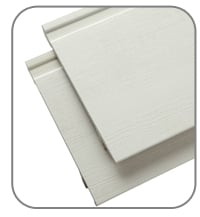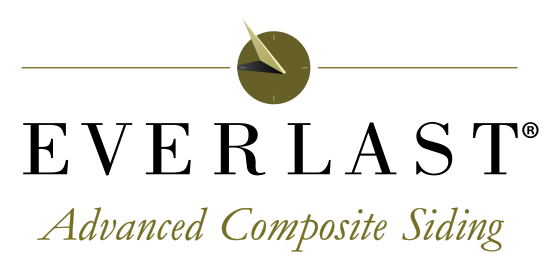 Everlast composite house siding is a more durable choice than other siding types homeowners could choose, such as vinyl, hardboard and fiber-cement siding. It's made with a polymeric and inorganic mineral blend. It withstands strenuous weather, and won't attract fungus and mold like most wood-based sidings. Everlast composite house siding also won't warp with fluctuating temperatures or humidity levels, and is low-maintenance. More About Everlast
Everlast composite house siding is a more durable choice than other siding types homeowners could choose, such as vinyl, hardboard and fiber-cement siding. It's made with a polymeric and inorganic mineral blend. It withstands strenuous weather, and won't attract fungus and mold like most wood-based sidings. Everlast composite house siding also won't warp with fluctuating temperatures or humidity levels, and is low-maintenance. More About Everlast
Everlast Composite House Siding vs. Hardboard Siding
Download a Full Siding Comparison Here
Hardboard siding is made of wood particles, resins and wax, and can be textured to mimic lumber (or another material). Because it’s less expensive than lumber, it’s been a popular choice with homeowners in the past. However, hardboard siding has drawbacks along with benefits:
- Absorbs moisture, which can cause warping, deterioration and reduced efficiency
- Prone to warp over time with weather and temperature fluctuations
- Susceptible to mold, a natural decomposer that can also pose serious health risks
- Poor insulator, allowing for noise pollution and energy waste
Any siding containing wood will be at risk from moisture, warping and mold growth. Everlast composite siding containing no wood components is a safer bet for homeowners looking to invest long-term in the aesthetics and performance of their home.
Everlast Composite House Siding vs. Vinyl Siding
Vinyl siding is easy to find and inexpensive. It's essentially panels of PVC plastic adhered to the exterior of a structure. Vinyl siding may be convenient, but also comes with risks:
- Low energy efficiency, reducing home performance
- Relatively short lifespan
- Tendency to fade or change colors with long-term exposure to sunlight
Composite siding is 500% thicker than vinyl, making it much more energy efficient and durable. It retains its colors over the years (even with exposure to weather), and can reduce energy loss through walls. Given it's thickness compared to vinyl, it holds up better against hail, and other debris like falling tree branches, baseballs, or stones that may project from a lawn mower.
Everlast Composite House Siding vs. Fiber-cement Siding
Fiber-cement siding is composed primarily of silica sand and cement, and is popular for its durability and strength. Many fiber-cement sidings are resistant to damage from insects, such as termites, and also to rot and even fire. However, there are still disadvantages:
- Moisture absorbent with a slow rate of evaporation
- Because it's a painted product, the surface is prone to chipping
- Susceptible to cracks when absorbed moisture freezes
- Susceptible to mold and mildew
- Poor insulator, increasing noise pollution, and allowing hot and cold air to escape through walls
Everlast composite house siding stands out from other materials due to its durability, efficiency and beauty. Because it's a thick product colored all the way through, the risk of damage is far lower than competitive products. Everlast is easy to install and low maintenance. A simple spray down with a hose is usually all that’s needed to keep it clean. All in all, Everlast composite house siding presents a smart, affordable option for homeowners seeking the most bang for their buck.
Considering Siding in Massachusetts or other parts of New England? Everlast is a great option for your home.
Author: Peter Martino





